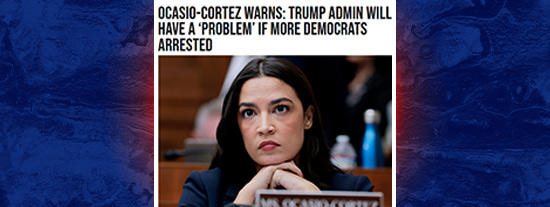Trump’s spending pause exposes extreme reach of federal government

Uncle Sam covers up to 40% state expenses.
Pennsylvania Gov. Josh Shapiro, the Pennsylvania governor, asked a court on Thursday to resume grant money flowing into his state. He said that $49 billion — or 40% of his budget annually — came from the federal government.
In a separate suit, Washington state claimed that 32% of the budget it receives each year comes from federal grants.
New Mexico reports that 89% of the state’s workforce assistance funds come from the federal Government. The money would have prevented returning veterans from receiving job training.
|
Private groups say that federal taxpayers assistance is the only thing standing between babies born HIV-positive or mothers who die in childbirth.
The financial reach of Uncle Sam is evident as the court battles over President Trump’s spending pause play out.
Jessica Riedl is a senior fellow with the Manhattan Institute. She said that Washington’s budget income now rivals the state tax bases.
She said, “We allowed the federal government’s size to become so vast and sprawling, it has replaced the state and local governments that are closest to people in areas like health care, education, and infrastructure.”
Mr. Trump said that it was too much.
His administration ordered the spending pause, and justified it with the claim that agencies had to determine how money was being spent and if it was in line with Congress’ intent or President’s priorities.
The pause was a result of a mixture of executive orders and memos, as well as decisions. One of them, issued by the White House Office of Management and Budget (OMB), ordered a general suspension of federal grant assistance.
A number of federal court rulings ordered the end of the pause. However, Mr. Shapiro stated that $2.1 billion worth in grant money was still not released.
The money will be used to plug old oil wells, mitigate abandoned mines and improve energy efficiency in the homes of those with low incomes.
The Constitution does not give agencies or the president the authority to suspend the access of states to funds that Congress has appropriated, nor to impose conditions on money already appropriated. Shapiro claimed that the Constitution requires the opposite.
Other states have also shared their stories of funding issues.
Los Angeles County has said that it no longer receives money from HIV programs.
Trump officials are fighting the lawsuits.
Judges have said that it is often difficult to distinguish between the money paused or restarted in the OMB memo and what was halted as a result of Mr. Trump’s inherent executive power, or the independent duties of agencies to ensure that money is spent carefully.
The courts haven’t been convinced on this point.
Conservatives have been advocating for a reduction in federal duties, but have had less success in achieving their goals. Budget for Education Department, which conservatives have long targeted, increased by 23% in the first four years of Trump’s administration.
A quarter of Education Department money is sent directly to the States.
According to USAFacts.org more than 40% and 80% respectively of the Health and Human Services Department and Transportation Department budgets are transferred to the state.
Mr. Trump said he wanted to see that change during his second term.
He has proposed the elimination of Federal Emergency Management Agency. Homeland Security Department is responsible for providing immediate services, and helping to recover and rebuild following disasters.
FEMA pays up to 75% of recovery costs when a federal catastrophe is declared. However, this can be higher. The President Biden has committed that the federal government will cover 100% of costs associated with California’s recent fires.
Mr. Trump said that states could take on emergency assistance.
“FEMA gets in the way of all things,” Trump said after taking office.
Ms. Riedl says that while it is possible to argue for more state action, especially in low-level disaster situations she points out that large disasters can overwhelm the ability of states.
Hurricane Helene caused destruction in North Carolina of $60 billion, which is roughly equal to the annual budget of the state’s government last year.









No Comments